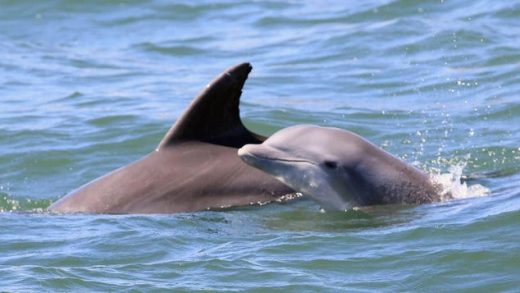Not very long ago, a description of our current moment would have read like a dystopian premise: a planet afflicted with deadly weather events, with rising oceans and global migration crises, with animal species rapidly going extinct, all while a rabid conservative movement flourishes worldwide, distorting facts and profiting off our downfall. Perhaps that is why, in these eight new dystopian novels (all published since last year), the dystopian setting is more or less our own—just nudged into a near future where our current perils have escalated, where the threats we already face can be seen and felt more clearly. This kind of near-future climate fiction (often called “cli-fi” for short) doesn’t read like much of traditional science fiction, with its vast conjectures about humanity’s future. Instead, the settings are based on solid science of where our planet is headed in the next few decades, allowing the writers to explore the human condition in this new and frightening world—a world becoming more familiar to us every year.
My upcoming novel, Plastic, takes place in the same future-present terrain. It is a world ravaged by climate change, beset with floods and hurricanes and wildfires, and also recovering from a recent nuclear war. Instead of human beings, however, this world is filled with plastic figurines, doll-like people with hinges and hollow bodies, polymer skin that leaks toxins in the brutal heat. Erin, the main character, is a reclusive figurine in her twenties, living under a fake last name so that no one will associate her with her older sister, Fiona, a famous ecoterrorist who vanished after bombing her college dorm. For Fiona, the stakes of climate change justify violent action, but Erin abhors violence and sees no hope for the world down that path. At the start of the novel, Erin feels little reason to hope in the future, but this will change when she falls in love with a blind figurine named Jacob, whom she must learn to trust with the traumas of her past.
Hope is a major theme for the novels on this list, a core value that their characters need in order to endure and fight the climate crisis, but difficult to maintain in the face of so many challenges. In some of these novels, a naive or misplaced hope leads the characters to undermine their best intentions; in others, hope is a north star that leads to epochal, world-saving change. Though a few of the titles feature activist groups that are cultic or self-deluded, the books never altogether abandon a hope in collective action, a belief that people working together can make a difference in the crisis. This “difference” might not be an immediate rescue of the planet, but rather preserving enough hope to keep on fighting for the future.
The Light Pirate by Lily Brooks-Dalton
Set in a near-future Florida, this vivid, intimate novel shows several decades in the life of Wanda Lowe, a woman born while a disastrous hurricane bears down on her state. In the years that follow Wanda’s birth, Florida will be largely abandoned and then finally “closed” as a state, “as if it were a rundown theme park with a roller coaster that was no longer safe to ride.” Wanda, however, will remain in Florida, along with her friend and teacher Phyllis, finding ways to survive amid the beauty and danger of a landscape returning to wilderness. A book that shows our deep bonds to nature even in the midst of climate disaster, the novel centers its optimism in Wanda’s enduring links to her environment, which—as the title suggests—remain radiant and luminescent despite the crumbling of human infrastructures.
The Deluge by Stephen Markley
Stephen Markley spent ten years writing this kaleidoscopic novel, which approaches the climate crisis from a vast array of perspectives, ranging from scientists to ecoterrorists to everyday citizens watching their world collapse. At almost 900 pages, the book also provides an in-depth look at the science and politics behind the crisis, taking the reader on a journey of three decades, from 2013 into the 2040s. Many books on this list look at climate change through the lens of a single person or community, but The Deluge provides a wide-angle view of our current moment and the catastrophes on the horizon, even including future newspaper articles and government reports. Despite the global scope of the book, Markley also gives in-depth portraits of his large cast of characters (a highlight is the impassioned ecoactivist Kate Morris), investing us in their personal lives even as the waters flood in and the old world is swept away. Though Markley doesn’t shy away from the horrors of the crisis—just the opposite, in fact—the novel finds meaning and hope in the fight itself, the struggle to save civilization as it teeters on the brink.
Land of Milk and Honey by C. Pam Zhang
This new novel by the brilliant C. Pam Zhang (author of the Booker-nominated How Much of These Hills Is Gold) tells the story of a talented chef in the near future, a world not only afflicted with climate change but also a planet-wide smog released by agricultural experiments. The chef (never named in the novel) flees her dystopian surroundings for a job at a utopia of sorts: a lush, privileged research facility in the Italian Alps, run by a wealthy capitalist and his geneticist daughter, Aida. Together he and Aida have created a secret biobank, a space to let nature flourish and research a new, sustainable future for the human species. This opulent setting seduces the chef, who is awakened to the pleasures of her body, allowed to bring her culinary dreams to life, and swept into a love affair with Aida. But as secrets in the compound begin to surface, as she cooks for the hypocritical rich, her new pleasures and privilege start to feel hollow, and she is drawn into deeper moral complications. With striking prose and sharply wrought characters, the novel asks crucial, complex questions in the midst of the climate crisis: What is the space for pleasure and the body as the world collapses around us? In what ways can we lose ourselves in the fight to save our planet?
The Great Transition by Nick Fuller Googins
Unlike other books on this list, which are set in the midst of the climate crisis, this novel begins sixteen years after “Day Zero,” the day the Earth’s carbon emissions reached zero. Though the climate crisis wreaked havoc on the world, a more hopeful civilization has emerged in its place, built on mutual aid and the outlawing of private corporations. The main character, Emi, is the teenage daughter of two heroes from “The Great Transition,” the name given to the epic struggle that saved their world in the last generation. Emi lives in a sunnier world than her parents at her age, but she still feels lonely and isolated, in part because her mother, Kristina, will not relax her vigilance and fears a backslide to the past. When Kristina goes missing after the assassination of a group of “climate criminals,” Emi and her father, Larch, head out on a search to find her, which in turn becomes a search to uncover Kristina’s secrets. The novel alternates between past and present, showing the struggles of the Transition and the difficult work of building a sustainable world in the aftermath.
Vigil Harbor by Julia Glass
The latest from National Book Award-winner Julia Glass, this sprawling novel is set in a small town on the coast of Massachusetts (the titular Vigil Harbor), an upper-class refuge from the turbulent America of the 2030s. Though the sea levels are rising, Vigil Harbor is built on a high headland that will let it survive centuries longer than many coastal communities. But there is trouble in this paradise, and the privileged residents will not be able to keep the outside world from intruding, whether through eco-terrorism, the arrival of mysterious strangers, or the piercing anxieties of their historical moment. With nine narrators and an intricate plot that includes dissolving marriages, long-hidden secrets, and a tsunami that threatens the Northeast, this ambitious novel takes a deeply human approach to the climate crisis, showing the hope, regret, and uncertainty of people living through unprecedented times.
How High We Go in the Dark by Sequoia Nagamatsu
A novel of linked short stories, How High We Go in the Dark is a powerful meditation on death, using climate disaster as a backdrop to contemplate loss on a global scale. In the melting ice of Siberia, scientists discover a Neanderthal corpse that contains a lethal virus, soon dubbed the “Arctic Plague.” The Plague, which attacks human organs, transforms life across the entire planet, causing mass death in every nation. (If this sounds like a very timely premise, it’s worth noting that many of these stories were written and published long before Covid.) Each story shows this death-stricken world through a different setting, and often with a surreal or hyperreal premise: an amusement park for terminally ill children, with a euthanizing roller coaster ride; robot pets that speak in the voices of lost loved ones; a pig, raised to donate his organs, who becomes sentient and learns to talk; an artist who makes ice sculptures from liquified remains. Though bleak at times, the novel finds hope in the deep love and connection possible in the experience of grief. Its vivid strangeness matches the strangeness of our own historical moment, when the planet itself is rapidly changing around us.
Eleutheria by Allegra Hyde
At seventeen, Willa Marks is abruptly orphaned when her survivalist parents commit suicide together. Uprooted from her home, she spends the next five years in a near-future Boston, rife with the escalating problems of climate change. Willa builds a life for herself in Boston—a cafe job; a relationship with an older Harvard professor, Sylvia Gill; a commitment to ecological causes, in part through her involvement with a “Freegans” group—but she abandons all this when, after a fight with Sylvia, she finds a guidebook that tells her about Camp Hope, a utopian compound on the Bahamian island of Eleutheria. Camp Hope, run by the charismatic leader Roy Adams, claims it is devoted to fighting climate change, to “living the solution,” but the reality Willa finds there is far more complex, the atmosphere cult-like. The situation complicates further when Roy disappears after a storm hits the island. Despite the dire realities around her, Willa continues to strive for her ideals, even when she’s let down by the flawed human beings who embody them.
Perilous Times by Thomas D. Lee
This hilarious (yet dark) satire takes a wildly original approach to the climate crisis, using a fantasy premise to address the all-too-real threat of global warming. As with many cli-fi novels, the book is set in the near future, but this time the protagonist is Sir Kay, an immortal Knight of the Round Table. Whenever the “realm” is in great peril, Sir Kay is brought back from the dead; he has fought to defeat both Napoleon and Hitler. But now he faces his most baffling adversary: the ecological collapse of Britain and the greed and political impasse that fuel the catastrophe. Not only must he go against a corrupt system, but also a resurrected King Arthur planning to “Make Britain Great Again.” With the help of Mariam, a young activist, Sir Kay must fight a different kind of battle for the future—though he still might need Excalibur to triumph. Despite the playful premise, the novel looks with serious gravity at the climate crisis, and gestures toward a hopeful future through the power of collective action.
The post 8 New Dystopian Novels that Explore Hope in the Climate Crisis appeared first on Electric Literature.
Source : 8 New Dystopian Novels that Explore Hope in the Climate Crisis













